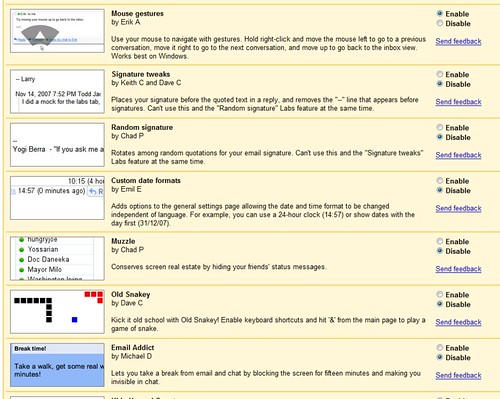Month: June 2008
-
Creative Commons: Good for Nature
At Overlap 08 this past weekend we talked a lot about sustainability in all its forms, including sustaining nature. This was on my mind this morning as I cycled over the Brooklyn Bridge and saw a small video crew capturing some footage of the bridge. Surely, I thought, there’s so much footage of this bridge already, you hardly need more. But of course they do need their own shots since most of the existing video is copyright protected. So crews all over the world today are traveling and otherwise consuming resources to recreate what was created yesterday.
Creative Commons is the legal infrastructure to change all that, helping us share all our media which gives us no competitive advantage, such as video footage of the Brooklyn Bridge. I’ve been sharing and using creative commons media for my work, and it occurred to me this morning that CC not only makes media available for everyone’s use, it encourages reuse which is one of the better ways to preserve our natural environment.
Put simply, reusing existing media is a more environmentally sound approach than creating media.
Lifehacker has a great list of 6 ways to find reusable media.

-
Bruce Hannah on Prototyping
I’m back from Overlap 08 which is becoming my reliable annual inspiration for all things professional. It will surely fuel more thoughts here, but I wanted to capture one thing Deb Johnson said that Bruce Hannah taught her in design school:
Mock it up before you fuck it up.
The profanity I think is not just him being glib but actually justified in most cases.
-
Google Labs Embedded in Gmail
I think a lot about how organizations and their products evolve quickly rather than remain static, and Google Labs are a prime example of that. By developing many alpha products, releasing several public betas, and getting live feedback they use the market to tell them what works. For many companies the notion of releasing your proprietary ideas is very scary, and yet the effect is the opposite: risk management.
A colleague just gave me a heads up to the Labs section of Gmail (accessible from Settings). It’s interesting for a few reasons:
- They’ve turned the labs upside down, embedding experimental ideas as preferences in an application rather than silo’d sites.
- Each feature is attributed to the employee(s) who invented it, acknowledging that great experiments often originate with one person, even if it takes a company to implement it.
- Some of the features — like “mouse gestures” which lets you navigate conversations by moving the mouse — innovate at the user interface level.
-
Design Thinking to Finance Skyscapers
In her comment to my post on the recent HBR article on design thinking, my friend HK writes, “What the article is missing is some concrete examples — what do designers do at strategic phases of projects, when the problems they’re solving aren’t explicit design problems?” She goes on to describe three of her own examples.
I suspect it’s both very hard and very easy to show examples. Very hard because applying creativity to what are normally analytical activities is a design problem in itself. I’ve found that inventing even rudimentary tools is hard. It’s reinventing how we’ve done business for hundreds of years, and it’s going to take years to build a more creative practice as reliable as our current methods.
 But finding examples of design thinking applied to business problems is also easy, there are examples all around us. Financial deals can be quite complex and structuring one requires creativity. I was reminded of this last night while reading Adam Gopnik’s Through the Children’s Gate, stories about living in New York. In one scene he tours midtown Manhattan with a property tycoon…
But finding examples of design thinking applied to business problems is also easy, there are examples all around us. Financial deals can be quite complex and structuring one requires creativity. I was reminded of this last night while reading Adam Gopnik’s Through the Children’s Gate, stories about living in New York. In one scene he tours midtown Manhattan with a property tycoon…It was a cold, crisp fall day, and as we looked at all the great glass skyscrapers of Park Avenue — the Seagram Building and Lever House and the Citicorp Center — he unraveled for me the complicated secrets of their financing and construction: how this one depended on a federal bond, and this one on a legendary thirteen-year lease with a balloon payment, and this one on the unreal (and unprofitable) munificence of a single liquor baron and his daughter…
We can imagine the sort of creativity needed to solve a problem like financing a building costing hundreds of millions of dollars involving several parties, credit instruments, commitments over time, tax structure, and so on. I’d like to know if anyone in finance is studying these deals as creative activities to help us understand how to design them better (and if traditional designers will be interested in this sort of design!).

